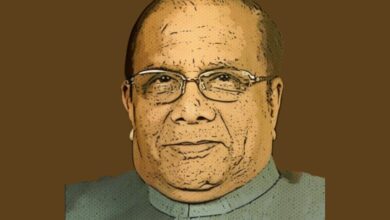Impact of COVID-19 on Indian Economy: Actions taken by Government for the same
The COVID-19 pandemic and the multi-phased lockdown imposed to curb its spread have resulted in a devastating blow to the Indian Economy.
India is the sixth-worst hit nation by COVID-19 pandemic after the U.S, Brazil, Russia, and the UK, according to John Hopkins University data. India’s economic growth was declining due to low consumption and investment levels. The disruption in economic activity will reduce India’s GDP growth rate to 2% or lower.
The economic impact of coronavirus pandemic in India has been largely disruptive. India’s growth in the fourth quarter of the fiscal year 2020 went down to 3.1% according to the Ministry of Statistics.
In its latest edition of the Global Economic Prospect, the World Bank downgraded its projection of India by a massive negative nine percent.
Actions taken by the Indian government to boost Indian Economy are:
In the fourth phase of lockdown, the Government of India had decided to open Liquor shops to cover their losses. In the 135crore population of India, half of the population has drinking habit So government firstly take advantage of this opened liquor shops. Excise duty on liquor is the third-largest source of income for a number of states, nearly 10-15% of total tax collection for some states. The ban during the lockdown affected alcohol sales, in turn having a major effect on the state revenue.
From June 8, the government has announced a calibrated exit strategy under which more economic activities will be allowed across the countries. It is the first of the three-phase plan for reopening of prohibited activities in non-containment zones with a stringent set of standard operating procedures that will be in place till June 30.
In this situation India’s use of new digital technologies to process applications for income support and deliver direct transfers to identified individuals or households.
Bearing huge loss due to lockdown, the government of India is now aiming to offer reputed companies to start their businesses in India.
India is also balancing the economic situation in light of China–the United States trade war. Taking advantage of this situation, the government of India is attracting those companies that wish to move out of China or are looking for an alternative to China. The PM’s office is conveying to the government center and state machinery to be ready with pro-investment strategies.
In mid-May, the German footwear brand, Von Wellx, decided to shift its entire operations out of China and into India. This is a great move for the economy.
Proving PPE kits, Mask And Medicines to Various Countries:
India has been exporting quite a few pharmaceutical products to various nations as our government has relaxed some export laws. This leads to coming of foreign currency.
India, which supplies more than a quarter of the world’s generic drugs, last month restricted exports of 26 pharmaceutical ingredients and the medicines made from them. The move was seen as an attempt to secure supplies for its domestic population after the outbreak played havoc with the industry’s supply chain globally.
Export of malaria drug, hydroxychloroquine, which came in addition to the restrictions on the 26 drugs and formulations. The drug is being tested to see if it is effective in treating patients with COVID-19.
In this way the government of India recovering money which has spent money on making drugs and also has invested in converting stadium into the quarantine area.
RBI: focused on providing adequate liquidity
 The Reserve Bank of India (RBI) has also stepped in to provide adequate liquidity to counter a sudden stop in economic activity, which would negatively affect firms’ revenues and cash flows.
The Reserve Bank of India (RBI) has also stepped in to provide adequate liquidity to counter a sudden stop in economic activity, which would negatively affect firms’ revenues and cash flows.
Fisical Measures taken by RBI
- A simplified personal income regime with reduced rates—a move that’s in line with the streamlining of the tax code.
- Expansion of the PM-KISAN scheme, which directly transfers money to farmers in a targeted way.
- Higher spending on long-term initiatives, such as rural roads, irrigation, warehousing, and transportation, to improve the productivity of the economy.
ECONOMIC PACKAGE
India’s overall economic package is announced as ₹20 lakh crore (US$280 billion), 10% of India’s GDP. The package, though announced on 12 May by the Prime Minister, included previous government actions, including the RBI announcements. The previous RBI announcements included around ₹8 lakh crore (US$110 billion) liquidity. the economic package also included the Finance Minister announcement of a package totaling ₹170,000 crores (US$24 billion) on 26 March. The strategy of combining fiscal and monetary, liquidity measures was defended by the government. Sitharaman explained that other countries had also done the same. Estimates of the size of India’s fiscal stimulus as a percentage of GDP varied between 0.75% to 1.3%.
The economic package consisted of a mix of reforms, infrastructure building, support to stressed businesses, and a certain amount of direct cash support. The “collateral-free loans” that the package provided aimed to “resume business activity and safeguard jobs”. Land reforms at the state level which were not mentioned in the economic package are also part of the overall changes.
Although India is facing serious challenges on the economic front, the economy may do better than some other developing economies, which are heavily dependent on world trade.
How will India bounce back?
The Government of India has a unique opportunity to revitalize and boost up the economic growth through the 3R chain. All these promises will be fruitful only if they are met. The 3R strategy is:
- Recycle—Funding government spending needs through the privatization of state-owned enterprise assets.
- Rebuild—Aggregating savings by providing tax cuts to the private sector and households.
- Reinvest—Providing incentives for manufacturing firms to reinvest such savings to substitute imports and increase the country’s global market share of exports.
We believe that 3Rs should help address India’s cyclical growth challenges through higher government spending, increased savings for the private sector and households, and create more job opportunities by encouraging new investment.
India’s growth is seen recovering sharply to 7.4% in the next fiscal year. The IMF sees India’s FY20 growth at 4.2%, down from 4.8% estimated in January.
“However the Indian Economy is expected to bounce back in 2021“, the World Bank said.




